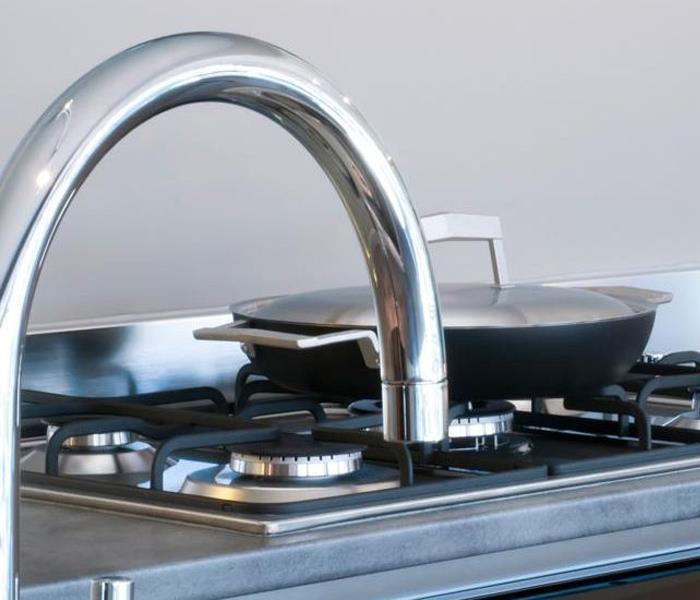The Other Places Mold Grows
10/28/2016 (Permalink)
Mold is relentless and, to make matters even worse, this enemy of the average homeowner starts off microscopic and can grow almost anywhere. These organisms don’t discriminate either—they live inside or (preferably) outside and they are even part of something as common as the dust on your furniture.
Maybe you’ve stopped reading this blog to get up and check the basement for this intruder that can cause health concerns over the long run? Even if you’re looking for those tell tale black blotches on the wall down there you might not be getting to all of the problem. The truth is, mold creeps and hides in places you might not have thought of. Mounting an attack that will beat this invader back is about much more than just opening a window downstairs and hoping for the best.
We know how to fight back against mold. We offer professional services to put your mind at ease including Assessment and Repair and Filtration and Removal because we’ve been in business long enough we know where to look and just what to do to in those other places mold grows like:
The Kitchen
If you hadn’t thought about it before, you might be cringing a little now to think there’s mold growing on something else beside that loaf of bread that’s been sitting in the cupboard for weeks. Still, there’s mold in the kitchen and with a little detective work you can expose it. Here’s what you need to do:
- Sniff the air because the enemy smells. The scientific explanation is that mold produces microbial volatile organic compounds (MVOC) but all you really need to know is it stinks. It has a musty air to it that you really can’t mistake for anything else.
- Corner the problem. Mold likes to attach itself to corners and places where you’ll have a hard time finding it like the tops of kitchen cupboards and the corners of walls. You might even encounter Stachybotrys chartarum or black mold near any of the sinks in your kitchen due to faulty plumbing or moisture.
- Mold can hide in ventilation systems and that includes the range hood over your stove. Even if you can’t see any of this fungus growing there, using the sniff test is a great way to catch the culprit.
Here’s just some of the molds that we’ve found hitching a ride in the kitchens of some of our clients.
- Cladosporium cladosporioides, Don’t let the fancy name fool you. This version can cause allergic reactions if you’re exposed to it over a long period of time. That’s why we offer a certification on all of the work we do for you.
- Ulocladium botrytis. You might want to write this one down because even though it’s not known to cause any health problems, it can result in economic damage on the inside of your house.
Check Those Carpets!
If might seem shocking at first, but when you stop and think about it , there shouldn’t really be any surprise when you read there could be mold found in your carpets. Just because you can’t see it doesn’t mean mold isn’t growing in your home and the carpets are a favorite habitat.
Any carpet that’s been damaged from a flood should be disposed of as a preventative measure and it’s good to remember that any carpeting that’s below grade level where there’s a lot of humidity is also at risk.
Aspergillus versicolor is just one of the nasty sounding varieties you might find in this floor covering. This is considered a class A hazard because it can pose risks to your health. If you think you might have this or one of the other common mold intruders growing under your feet, you can get in touch with us right away for our assessment and containment services.
Our complete testing of your home includes air quality and containment of any affected services. We don’t want any mold to spread around your house so we act quickly to contain any sources including your carpets.
Like Looking Out The Window? Keep An Eye Out For Aureobasidium Pullulans!
Mold is a sneaky invader that likes to hide in places where you least expect and that’s why you need to check your window frames for Aureobasidium Pullulans and a variety of other species of mold like Cladosporium Sphaerospermum. Here’s a few things you’ll need to look at to keep one step ahead of this potential problem.
- Searching the windowsills is a great place to start. Mold needs organic matter to grow and it can start on either aluminium or wooden windowsills. Once the dust settles on either type, mold starts to grow.
- Keep an eye on the glass panes in your windows too. Although mold doesn’t usually grow on glass, moisture can get trapped between the panes and dust can accumulate on the inside creating the environment it needs to get started.
- Frame the problem up properly. Mold can even hide in those hard to reach places like the corners where the window frame meets the glass. If you see the glass fogging up with condensation in the winter or when the windows are otherwise closed, you need to look in the hiding spots for the tell tale black spots.
We’ve been in the business of looking after all of your mold concerns for years now. We take a personal interest in making sure you home is a healthy and happy place that’s completely free of this problem.
Remember, your health and satisfaction are our top priorities and you can get in touch with us at 505-828-3567 and one of our professionals will start looking into any mold issues you’re having.
We are affordable and, perhaps best of all, licensed, bonded and insured so you know that you’ll get the best service from each and every one of our expert technicians.






 24/7 Emergency Service
24/7 Emergency Service
